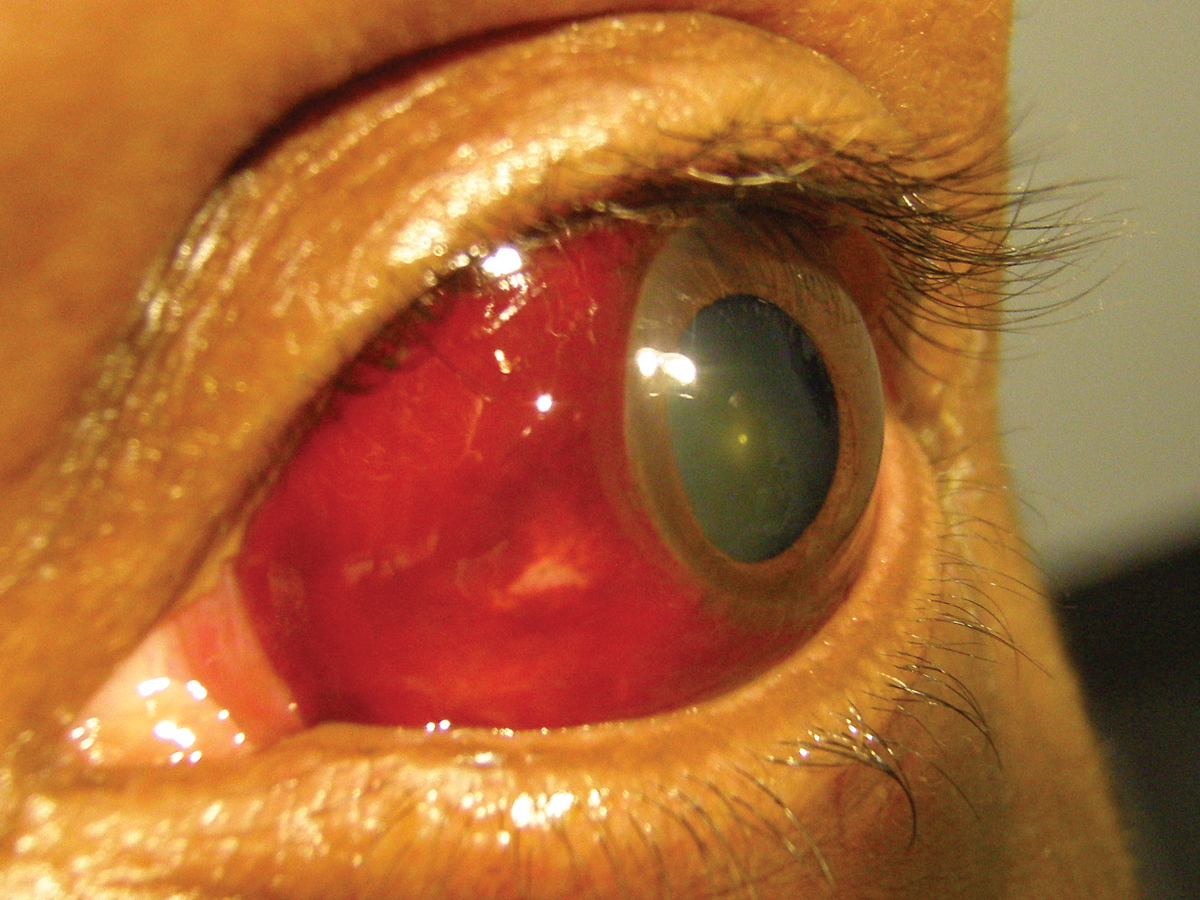 |
| Subconjunctival hemorrhage is not an uncommon finding in patients with orbital trauma. Photo: Andrew Gurwood, OD. Click image to enlarge. |
In the United States, 3% of all emergency department visits are due to orbital trauma. Oftentimes, ocular injury or orbital fracture is accompanied by subconjunctival hemorrhage, which research has indicated may have implications about a patient’s underlying ocular pathology. A recent study confirmed the correlation between the extent of subconjunctival hemorrhage and ocular pathology in a cohort of patients who sustained ocular trauma; however, it also revealed that vision-threatening ocular pathologies could exist in the absence of subconjunctival hemorrhage, too.
The 265 patients included in the retrospective chart review presented to a trauma center with fractured orbits between 2015 and 2018. Each underwent a comprehensive ophthalmic assessment, and all known or identified ocular pathologies were recorded. The researchers graded subconjunctival hemorrhage in a 0° to 360° manner and then calculated the probability of ocular pathology as a function of increasing the degree of hemorrhage in 90° subgroups.
The majority of ocular trauma patients presented with no subconjunctival hemorrhage, but a significant 40.4% were still found to have some degree of hemorrhage. For 9% of the patients in the study, the presence of at least one ocular pathology was noted. The researchers noted that the most common pathologies included entrapment (22.2%), hyphema (16.7%), traumatic optic neuropathy (8.3%) and commotio retinae (8.3%).
When they completed a simple logistic regression analysis, the findings revealed a higher incidence of ocular pathology with increasing severity of subconjunctival hemorrhage from 0° to 360°. In addition, analysis “demonstrated a higher proportion of ocular pathology in 181° to 270° (25%) and 271° to 360° (26.3%) subconjunctival hemorrhage subgroups compared with the 0° (6.3%) subgroup.”
The researchers suggested the data emphasizes the importance of conducting thorough clinical evaluations on every patient who presents with orbital trauma to be able to detect ocular pathologies that could threaten visual outcomes.
“Our findings highlight the idea that underlying ocular pathology in orbital fractures can present with or without subconjunctival hemorrhage, including lid laceration (0° to 30°), traumatic mydriasis (30° to 135°), extraocular muscle entrapment (0° to 360°), hyphema (30° to 360°) and commotio retinae (135° to 360°),” the researchers concluded in their study. “Although some association exists between the extent of subconjunctival hemorrhage and the incidence of ocular pathology, primary and emergent care physicians should remain cautious of letting the presence or absence of subconjunctival hemorrhage direct investigations in the management of ocular pathology in patients with orbital trauma.”
Dhillon J, Nassrallah G, Nithianandan H, et al. Significance of subconjunctival hemorrhage in predicting ocular pathology for patients with orbital fracture. Can J Ophthalmol. March 9, 2022. [Epub ahead of print]. |

